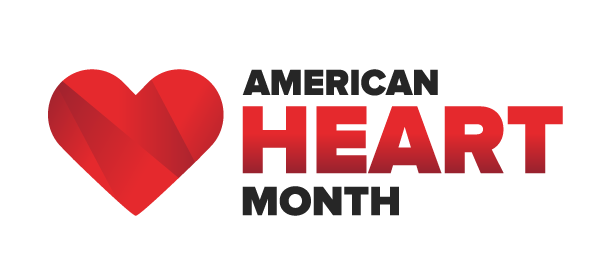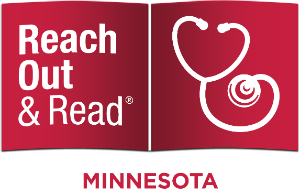March 5, 2024 @ 8:30 am – 9:15 am
Choose a class from one of the Wellbeats channels! Anything from yoga, Zumba, sculpting, step and more!

Here you can look up a healthcare provider, a clinic location, information about a condition/treatment, events, or other infromation.
Choose a class from one of the Wellbeats channels! Anything from yoga, Zumba, sculpting, step and more!

Choose a class from one of the Wellbeats channels! Anything from yoga, Zumba, sculpting, step and more!


American Heart Month is the perfect time to learn about the importance of exercise and steps you can take to help reduce your risk for heart disease.
Michele Rothbauer, Certified Exercise Physiologist Welia Health, talks about the many benefits of exercise. These include building strength and stamina, enhancing flexibility and improving mental performance, just to name a few.
Surprising fact, only 1 in 4 adults meet the physical activity guidelines by performing 150 minutes of moderate to intense exercise activities per week.
Stay active! 150 minutes may sound overwhelming, however, breaking up the time into 10-minute blocks for a total of 30 minutes per day can be a bit more manageable.
Michele offers more guidance on how to get started with an exercise routine and stay motivated.
Check out the Welia Center and hit the walking track during these cold winter months!
Anytime is a great time to set goals and become the best version of yourself. Now, in the age of COVID-19, it may be an even better time. While not conclusive, several studies suggest smokers who develop COVID-19 are up to 14 times more likely to need intensive treatment. For many, this is just the motivation needed to tackle tobacco habits once and for all.
When you’re a tobacco user, whether it be smoking cigarettes, a cigar, a pipe, or chewing tobacco, it is not just a physical addiction but also a mental addiction. Often it feels like a way to cope with the stress of life’s challenges. So, trying to quit is more than just vowing to put the cigarette down or spit out the chew, it can challenge your entire being.
“One of the first things we explore are the reasons for quitting,” said Aaron Korte, RN, RCEP, CDE, CTTS, who coordinates the Welia Health tobacco cessation program.
“People are often surprised at their reasons for quitting. We talk about the obvious; financial, family, and health. Then as we talk longer, people realize they want to quit for a grandchild or child, or that cigarettes make everything smell bad. The person often explains how cigarettes or chewing tobacco has changed how they interact with their family and friends. They are just plain tired of being controlled by the addiction,” said Aaron.
Aaron Korte, RN, RCEP, CDE, CTTS
When you’re ready to quit, the Welia Health team is here to help. The program is covered by most insurance plans and others may qualify for reduced or free sessions if coverage is not available.
On average, Aaron meets with folks 3 to 4 times or more, if needed. The first appointment generally takes 45 minutes to review all available options to help people succeed. “I’ve found that the best tobacco cessation plan is one that the person comes up with…and I’m here to support it with the medical and emotional approaches that are available,” said Aaron. Before leaving the first visit, people will have an individualized plan for quitting.
There are several methods for quitting tobacco: nicotine replacement options, prescribed medications, or other holistic choices. Most opt for a combination of them all.
Between your provider’s guidance and the support of the tobacco cessation program support, you will find the best medication to fit your individualized plan.
In addition to the issues around one’s personal identity, consider these factors.
Call 320.225.3356 to schedule an appointment and get on the road to becoming a former tobacco user.
Article by Rachel Cady, MD, Welia Health Women’s Health and OB/GYN provider
While everyone talks about menopause symptoms, it is perimenopause, or the menopause transition (MT) that is usually the most symptomatic for women. Perimenopause begins with menstrual cycle irregularities and ends following one year of absent menses. The average age of perimenopause is 47, and the average age of menopause is 51-52 year old. MT lasts about 4-8 years, but tends to be longer in smokers and in those with earlier symptom onset.
Below are the most common symptoms you’ll experience during perimenopause:
Menstrual cycles vary depending on if ovulation (release of egg) occurred. About 25% of menstrual cycles in the perimenopause are ovulatory. Ovarian follicle aging progresses in the perimenopause. Progesterone and estrogen levels are extremely variable, which changes bleeding patterns.
Very heavy bleeding or bleeding in between periods are abnormal, and you should schedule a visit with your clinician. Cycles in early perimenopause are 7 or more days shorter, while cycles in the late perimenopause are at least 60 days apart.
Hot flashes that occur during the perimenopause are the result of a narrowing in the brain’s thermoregulatory center. This area of the brain is estrogen sensitive. When estrogen levels decline, the body is not able to accommodate as quickly. Therefore, skin redness, sweating, sometimes anxiety, and waking up at night result. About 75% of women report hot flashes with the average duration of about 5-7 years.
Metabolism goes down about 25% for perimenopausal women, which commonly results in weight gain. Most women have no idea this is going to happen, and are therefore not prepared.
So, what other things do you have to look forward to during MT?
Okay, so those weren’t really “things to look forward to.” But I can tell you something good!
The latest-and-greatest data clearly shows that by being proactive, planning ahead, being open to treatment options, and being prepared, you can help yourself be healthier in the postmenopause.
Women on average are living one third of their lives postmenopause. The New York Times recently referred to perimenopause as “The Puberty of Midlife,” and most importantly, the conversation is not being heard enough.
Women are hungry for accurate information pertaining to health. Perimenopause is not “doomsday.” By recognizing what is normal, understanding common symptoms and their causes/treatments, and having a preventive/proactive mindset, you can largely lessen these symptoms. Perimenopause remains a wonderful time to check in with your clinician to help in this process.
Welia Health’s Women’s Health providers can help you navigate your transition through perimenopause to menopause. Meet our Women’s Health providers. Sign onto MyChart to schedule an appointment.
A book is just the beginning of a bright future. The ability to read well and to enjoy reading is critical for a child’s later success. Reading for pleasure correlates with academic achievement and the opportunity for career growth, well beyond the elementary school years.
Third grade is a pivotal year for reading development. “Around third grade, the average reader is doing more than merely reading the words on the pages. They begin to use comprehension skills to ask if the words make sense and use their own personal experiences to understand and relate to the stories and conversations they are having (Scholastic.com).”
Third grade is also crucial because it is the final year that children are learning to read—by fourth grade, students are reading to learn. Students who are not proficient readers at the start of fourth grade will struggle to learn and fall further behind. In fact, a long-term study called Early Warning! Why Reading by the End of Third Grade Matters showed that students who were not proficient in reading by the end of third grade were four times more likely to drop out of high school than proficient readers. What’s more, 88 percent of students who have failed to earn a high school diploma were struggling readers in third grade.

Given the importance of learning to read, particularly in third grade, Welia Health speech therapists Liz Eklund, Bethany Werner, Amy Miller and Julie Rue volunteered to read to area third graders just last month. They visited Hinckley, Pine City, Mora and Finlayson Elementary Schools to read the first chapter of one of three books: Secrets According to Humphrey and School Days According to Humphrey, both by Betty G. Birney, and Very Short Fairy Tales to Read Together by Mary Ann Hoberman. The kids then got to take the book home to keep and finish reading on their own.
The campaign extends Welia Health’s work with Reach Out and Read Minnesota. The Reach Out and Read model incorporates books into pediatric well-child visits, starting at six months and continuing through age five. Through the program, Welia Health providers use age-appropriate books as a tool to gauge a child’s development and to encourage parents to read to their children.
Research shows that the Reach Out and Read program promotes literacy, and Welia Health is a proud partner by offering books to our pediatric patients. According to a National Institute of Health study, “This simple and inexpensive intervention, delivered as part of well-child care, changed parent attitudes toward the importance of reading with their infants and toddlers. Through these interventions, parents and their children read more together, and this in turn was associated with enhanced language development in older toddlers in a diverse group of families.”
When you read, talk, sing and play with babies and toddlers, the brain forms strong neural connections or synapses that create the foundation for all future learning, behavior and health. While brains are built over time, the foundations of brain architecture are constructed early in life. In fact, 80 percent of a child’s brain develops by age three.

Many parents don’t realize that moments of connection through talking, reading, singing, and playing, particularly in the first 90 days, have a tremendous and lasting impact given how the brain develops. When parents do know the impact, behaviors change.
That’s why Welia Health is committed to the Reach Out and Read program. Parents who participate in Reach Out and Read are 2.5 times more likely to read with their children. And when you read to young children, good things happen beyond creating healthy together time for parents and children. The lifelong benefits include:
While reading books to infants and toddlers is critical to language and brain development, reading the signs in the grocery store while you’re shopping or in the waiting room before your doctor’s appointment is helpful, too. In fact, there’s a new statewide movement in Minnesota called Little Moments Count that is encouraging parents, caregivers, grandparents, and friends to talk, read, sing and play with babies and toddlers given the lifelong impact of those early years.
At Welia Health, we’re committed to doing everything we can to ensure that people in our communities are healthy and happy. A key factor connected to both longevity and quality of life is whether you graduated from high school—a student’s ability to read at grade level by the third grade is the number-one indicator of whether that student will or will not complete high school.
While Minnesota does better than most states with respect to literacy rates, we still need to do better. In 2015, City Pages reported that “Hundreds of thousands of Minnesota Adults Struggle to Read” and just last year, MinnPost featured an article titled, “Minnesota’s Persistent Literacy Gap has Lawmakers Looking for Ways to Push Evidence-based Reading Instruction.”
At Welia Health, we’re doing our part because literacy matters to people’s health. When people have low literacy skills, it can make it difficult for them to navigate their healthcare, even with our supportive staff at Welia Health. Plus, studies have shown that patients with inadequate literacy have less health-related knowledge, receive less preventive care, have poorer control over their chronic illnesses, and are hospitalized more frequently than other patients.
So, for the sake of our collective health, let’s read more to babies and toddlers and make sure that our third graders can read at grade level. Their futures depend on our commitment to their literacy.
Literacy and health outcomes: a systematic review of the literature
Thank you to 7 Paisley Pumpkins Photography and the Paquin family: Sam, Kirsten, Linley and Quinn for sharing their beautiful smiles. The Paquins are from Mora.
At Welia Health, we’re feeling extremely grateful because of you, our patients, and our communities. Also, thank you for your patience and support over the past few months, as we rolled out our new name and logo. We know you’ve heard a lot from us lately and appreciate your listening—and we appreciate you.
Too often in today’s fast-paced world, we don’t slow down enough to say thank you. But we should. Besides being a nice thing to do, expressing gratitude has proven health perks, according to a vast body of research.
Thank you for choosing Welia Health. We are grateful for you, our patients, and your continued support.
Originally, we were going to focus on technology habits and kids. But since most people—children and adults alike—struggle to shut off electronics, we’re broadening our scope. Technology permeates our society today, so there’s really no escaping its use. But most of us can better manage our technology habits.
When you Google “limiting technology use,” nearly all of the top articles relate to kids and technology. But all of us can benefit from turning off screens. Here are some of the top reasons (modified from The Concerns About Kids and Screen Time):
Sleep: In today’s 24×7 society, we undervalue sleep. Some people even boast about how little sleep they get. But sleep is critical to our health. Good sleep is connected to physical health, emotional well-being, and longevity. On the flip side, chronic sleep deprivation can lead to troubling medical issues, from obesity and diabetes to heart disease and stroke.
Technology use can disrupt healthy sleep in two critical ways:
To reduce the effects of electronic stimulation on your brain, turn on your device’s blue-light filter. Research shows that the blue-wave frequency triggers wakefulness. (See Sleep Better by Using a Blue Light Filter on your Phone or Computer.)
Scrolling through social media, binge-watching Netflix, and reading Welia Health blog posts are enjoyable online pursuits. But to improve your health and well-being, spending less time online is a worthy goal. Below are some suggestions:
Navigating technology when it seems to overrun our lives is a challenge. But setting limits for yourself and the ones you love is essential to create healthy habits, meaningful relationships, and connected communities.
“Keeping the doctor away” is not a medical center’s best practice or a wise decision for anyone. But eating “an apple a day” is a worthy pursuit. At Welia Health, we’re here for you, and we’re confident that your apple consumption will never replace your need for our care.
Curiosity about the age-old adage sparked our research into its origins. The first recorded use was in the 1860s in Pembrokeshire, Wales. The initial phrasing was, “Eat an apple on going to bed, and you’ll keep the doctor from earning his bread.” The saying evolved into “an apple a day, no doctor to pay” and “an apple a day sends the doctor away.” The version we know came to be in 1922.
Ancient Romans and Anglo-Saxons recognized the health benefits of apples, according to Caroline Taggart, author of “An Apple a Day: Old-Fashioned Proverbs and Why They Still Work.” The fruit also appeared in traditional Ayurvedic medicine, one of the world’s oldest holistic (or “whole-body”) healing systems, starting about 1,500 years ago in southern Asia.
Fast-forward thousands of years, and doctors and researchers continue to examine the health benefits of the popular fruit. In 2011, a Dutch study showed that eating apples and pears might help prevent stroke. The following year, an Ohio State University study of healthy, middle-aged adults showed that consuming an apple a day for four weeks lowered levels of bad cholesterol by 40 percent.
Fruits and vegetables provide our bodies with critical nutrients that help us stay healthy and ward off disease. Regular consumption of fruit is linked to reduced risks of cancer, cardiovascular disease (especially coronary heart disease), stroke, Alzheimer’s disease, cataracts, and some of the functional declines experienced with aging.
Plus, diets that include enough potassium from fruits and vegetables also help reduce the chance of developing kidney stones and may help lower the effects of bone loss. Fruits are also low in calories and are often part of a weight-loss diet.
Different fruits and vegetables have distinct nutritional benefits and offer varying levels of the vitamins we need. For example, apples are low in calories and sodium and high in fiber, and Vitamin C. Carrots are high in beta carotene, fiber, vitamin K1, potassium, and antioxidants. They also help lower cholesterol levels and improve eye health.
Use the chart below to identify the nutrients your body needs, their benefits, health issues related to deficiencies, and the best sources.
Current nutritional guidelines recommend eating five servings of fruit and vegetables a day. Here are five ideas on how to get to those five servings:
To learn more about nutrition and how to adjust your diet to meet your health goals, contact Welia Health’s Nutrition Services and schedule an appointment today.

Stock up on apples. You know what they say about apples! Here are links to area orchards:
In today’s workforce, too many people are sitting at a desk all day long. When you reduce sedentary time, you can improve your physical, metabolic and mental health. So consider sitting less and standing more with a stand-up desk.
A standing desk is not going to help with weight loss or avoid weight gain. But there are benefits that researchers have identified:
Other potential health benefits have not been proven. Instead, they are assumed based on research that shows that long hours of sitting are linked to a higher risk of obesity, diabetes, cardiovascular disease, cancer (especially colon or breast cancer) and premature death. More research into the health benefits of standing desks must be conducted to confirm their real health impact.
Before you buy a standing desk, have realistic expectations of its benefits and ease into its use. Here are some suggestions:
A standing desk isn’t right for everyone. It depends on the type of work you do, your work style, and your personality. But it might benefit you. There’s no harm in trying a standing desk. Just follow the recommendations so you don’t end up with any “side effects” of this intervention.